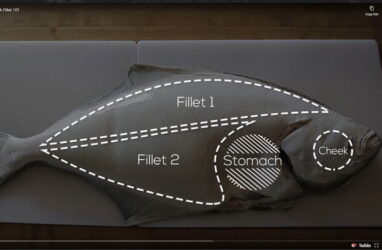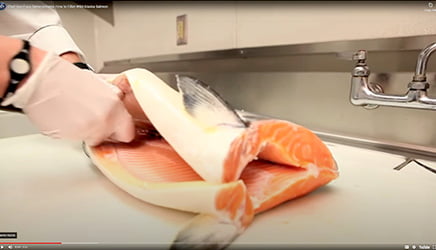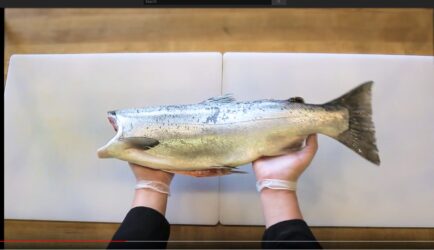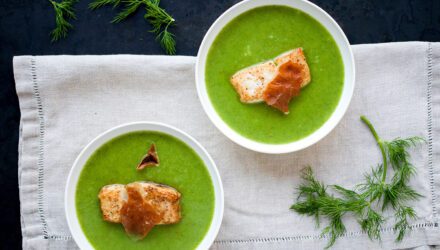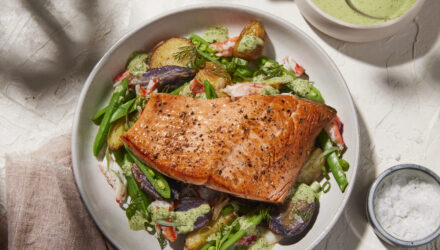Training & Techniques

Foodservice Quality Starts with Training
From proper filleting, handling and receiving to cooking techniques, we’ve brought together everything commercial chefs need to know about preparing wild Alaska seafood in the kitchen.
Watch some of the best chefs in the business demonstrate the techniques, and then explore some of our favorite recipes specifically designed for commercial kitchens.

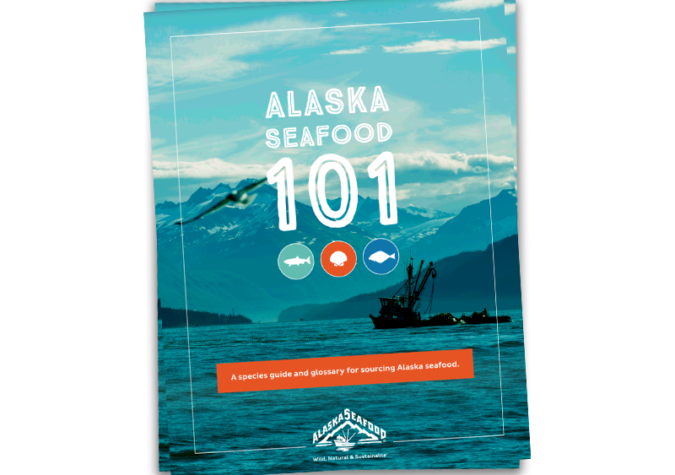
Learn the Basics about Alaska Seafood
Brush up on your Alaska seafood species knowledge with this guide and glossary for sourcing Alaska Seafood.
Alaska Seafood Waitstaff Tips
The tips above cover some of the best points on why serving Alaska seafood is a great benefit to your business and patrons. The health of the oceans is important to us all, which is why we are proud to serve seafood from Alaska.
Download the Waitstaff TipsReceiving & Handling Tips
-
Receiving
-
- Inspect your order of Alaska Seafood immediately upon delivery.
- Boxes with watermarks may indicate that the product has been allowed to partially thaw during transit.
- Open at least one carton per shipment and check the core product temperature with an instant-read thermometer.
- Fresh fish should be delivered at 30-38° F and frozen fish at 0-10° F.
- If the temperature does not meet shipping specifications, notify both the carrier and supplier immediately.
- Next, check the net weights of the glazed product. If you are not sure how to do this, please call or write our Alaska Seafood Marketing Institute quality assurance program.
- Check the quality again after proper thawing. The only thing you should smell is the sea.
-
Storage
-
You should never allow frozen seafood to thaw until you are ready to use it, as refreezing seafood severely alters its quality.
- Transfer the Alaska Seafood shipment quickly into frozen storage upon receipt.
- Store whole, cleaned fresh or freshly thawed fish in a stainless steel pan with good drainage and cover with a towel and pile ice on top of and around the fish.
- The key to preserving frozen seafood product quality is to maintain constant, very cold temperatures of 0°F or colder. Store fresh fish at 32-35° F. Store frozen fish at -18 to -29° F.
- Maximum shelf life is obtained by holding frozen seafood at -10°F or colder
- Stack frozen cartons away from walls and off the floor for better air circulation.
- Mark the date on each box as it enters the storage area and rotate product on a first-in, first-out basis.
-
Thawing
-
Thawing has a profound effect on seafood quality.
- Never allow Alaska Crab to thaw at room temperature or place it in warm water to thaw, as flavor and texture may be lost.
- Planning your product needs carefully will help assure your customers a pleasurable dining experience.
- Determine how much seafood you will be serving as the thawing process differs according to the amount needed.
For small amounts of crab and shatterpack fillets, the slow approach to thawing is always recommended:
- Remove the desired amount from the case shipment ( immediately returning unused portions to the freezer) and place it in a refrigerator set between 34° and 38° F.
- To prevent the build-up of melt-water, place the seafood into pans that drain easily, and place the thaw pan into a larger pan to contain any drippings.
- Don’t place thaw pans over other product in the refrigerator.
- Monitor the temperature inside the refrigerator and plan to use the crab the following day.
For high-volume feeding occasions, follow this procedure for thawing product:
- Protect the frozen product in a plastic bag, then immerse in cold spray water – it is important that the water is cold.
- To maintain the quality of the product, do not allow the seafood to come directly in contact with the water or let the running water “drill” into the plastic bag.
- Once the seafood is thawed, keep it chilled and covered until ready to use.
- Never refreeze.
Frozen Fresh, What is that?
- It is important to note that when the word “fresh” is applied to seafood, it doesn’t necessarily mean that the fish was harvested recently, or is of top quality. The best tasting, highest-quality seafood is often frozen and it’s not surprising that Alaska, the largest commercial fishing industry in the country, is also the leader in seafood innovation.
- Alaska has developed freezing and processing technology as a superior method of preserving the quality of Alaska seafood as soon as it leaves the water.
- Harvested at the peak of freshness, Alaska seafood is quick-chilled, carefully processed and rapidly frozen within hours of leaving the water. (Alaska crab is pre-cooked before freezing).
- The methods used ensure that its unique flavor, flesh color, texture and nutritional value are preserved for year-round dining pleasure.
- Advantages of frozen means you can menu all of the delicious varieties of Alaska seafood year-round, knowing Alaska’s fresh-frozen quality remains and also offers you the best value for the dollar.
- The quality of seafood cannot be improved once the fish leaves the water, it can only be maintained, and Alaska’s industry experts have made every effort to ensure that Alaska Seafood reaches your door with its just-caught freshness locked in.
- Numerous studies have shown that most consumers do not taste a difference between high-quality frozen seafood and high-quality fresh seafood.

